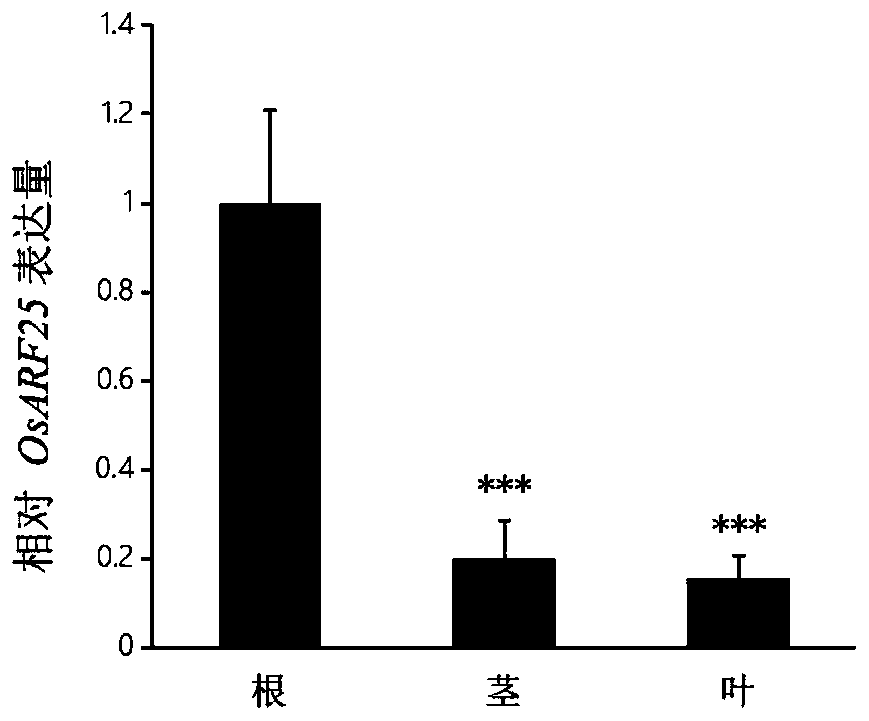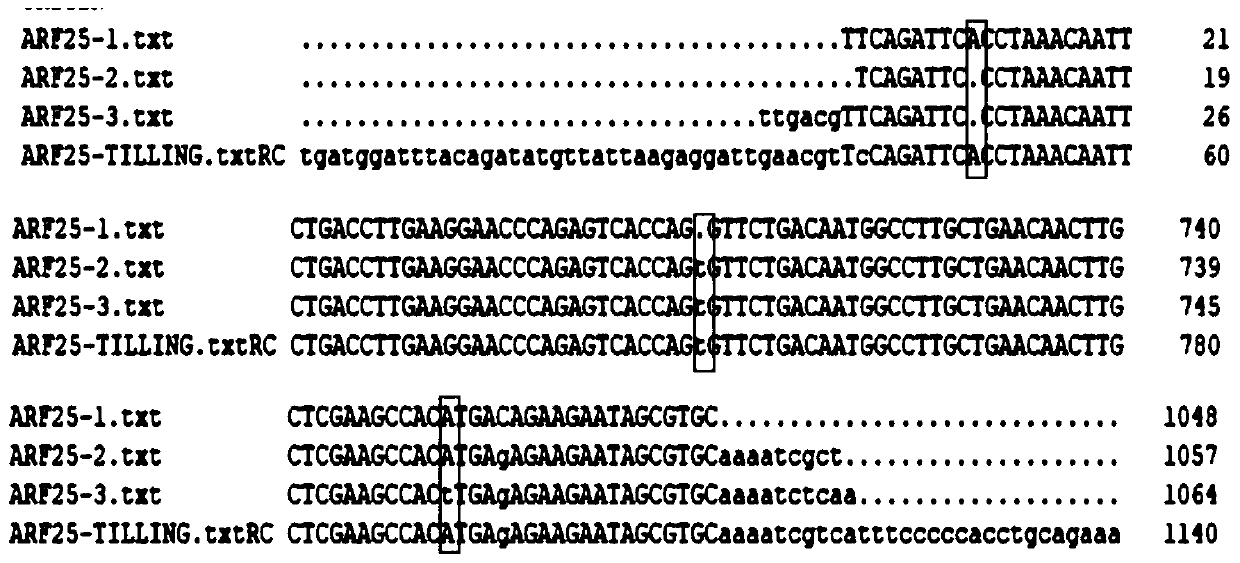Isolated DNA molecule, encoded protein molecule and application thereof
A DNA molecule and an isolated technology, applied in the field of genetic engineering, can solve the problems of reduction of adventitious roots, reduction of root-shoot ratio, etc., and achieve the effects of increasing yield, improving ability, and improving resistance to drought and salt stress.
- Summary
- Abstract
- Description
- Claims
- Application Information
AI Technical Summary
Problems solved by technology
Method used
Image
Examples
Embodiment 1
[0043] Cloning of Example 1 Rice Gene OsARF25
[0044] 1. The rice variety Zhonghua11 was cultured in an incubator (SPX-250-GB, Shanghai, China): the growth conditions were photoperiod 16h / 8h (L / D), 28°C.
[0045] 2. DNA extraction. Take about 500mg of fresh rice plant tissue material, add 80μl Lysis Buffer, grind the plant tissue with a grinding rod, add 120μl ddH 2 O. After centrifugation at 12000rpm for 15min, the supernatant was transferred to a new centrifuge tube, the OD value was measured, and detected by electrophoresis.
[0046] 3. Cloning of genes. Using the extracted rice DNA as a template, the forward primer and the reverse primer are used to carry out PCR to obtain the full length of the gene. For specific sequence information, see SEQ ID NO.1.
Embodiment 2
[0047] Example 2 Analysis of expression pattern of rice OsARF25 gene organ
[0048] Extract total RNA from rice roots, stems, and leaves respectively, use a reverse transcription kit to reverse transcribe the total RNA into cDNA, and use primers SEQ ID NO.5 and SEQ ID NO.6 to perform Real-time PCR detection, such as figure 1 shown. The results showed that the gene was constitutively expressed, with the lowest expression level in leaves and the highest expression level in roots.
Embodiment 3
[0049] Example 3 Analysis of the expression pattern of rice gene OsARF25 under drought, high-salt stress and plant hormone treatment
[0050] Two-week-old rice seedlings were subjected to 150mM NaCl and 20% PEG drought treatment for 12 hours, and total RNA was extracted from the roots after 0, 2, 4, 8, and 12 hours of treatment; , 0.25, 0.5, 1, 1.5, 2, 4, 8, 12h after the total RNA in the leaves; 50μM IAA, 6-BA, KT, ABA, GA soaking treatment for 8h, extract the total RNA in the root. The total RNA was reverse-transcribed into cDNA using a reverse transcription kit, and Real-time PCR detection was performed using primers SEQ ID NO.5 and SEQ ID NO.6. The results showed that the expression level of OsARF25 increased rapidly after NaCl treatment, reached the maximum at 8h, and the expression level increased significantly, as shown in figure 2 As shown in a, after being treated with 20% PEG8000 for 4 hours, the expression level of OsARF25 was significantly increased and reached t...
PUM
 Login to View More
Login to View More Abstract
Description
Claims
Application Information
 Login to View More
Login to View More - R&D
- Intellectual Property
- Life Sciences
- Materials
- Tech Scout
- Unparalleled Data Quality
- Higher Quality Content
- 60% Fewer Hallucinations
Browse by: Latest US Patents, China's latest patents, Technical Efficacy Thesaurus, Application Domain, Technology Topic, Popular Technical Reports.
© 2025 PatSnap. All rights reserved.Legal|Privacy policy|Modern Slavery Act Transparency Statement|Sitemap|About US| Contact US: help@patsnap.com



